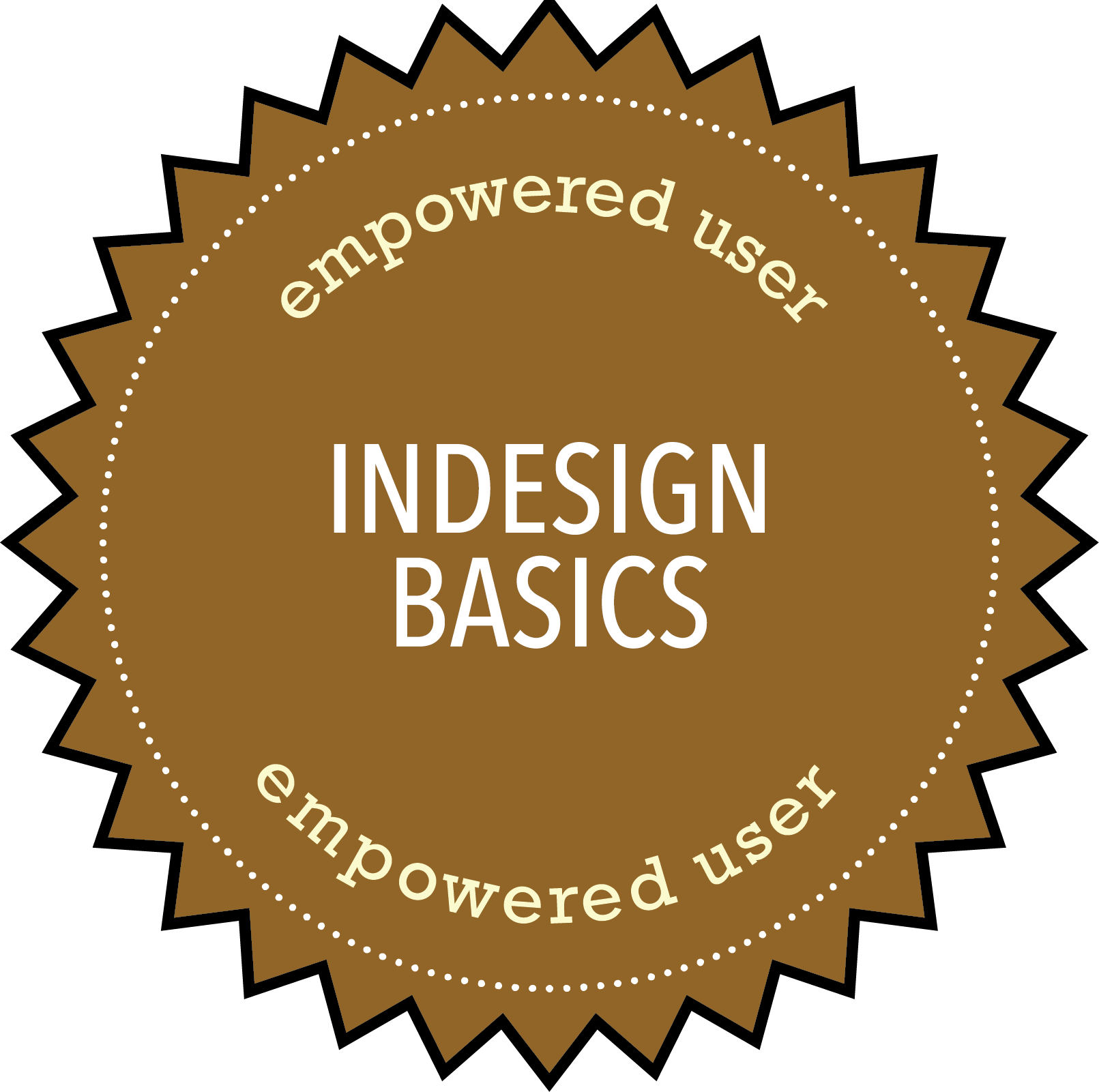
EMPOWERED USER
INDESIGN BASICS
At first glance, it might seem strange to think that the desktop publishing application Adobe InDesign would be relevant in a course devoted to web design. After all, InDesign is intended for laying out print publications, and the web is the exact opposite of print. These differences are even more pronounced as we enter into the world of responsive design. Web designers train themselves to think of page layout in a fluid way, recognizing that they need to give up a certain amount of control in order to support a wide variety of screens. In contrast, desktop publishing software presupposes that the designer has absolute control over every single aspect of the printed page.
However, just as web designers need to be flexible about the screens which they are targeting, they also need to be flexible about the type of design work that they do. At the end of the day, web designers are designers. Designers should be able to work with digital and physical outputs. Even if you don't use the program very often, it is something you should have in your toolkit.
In this badge, you will learn how to use Adobe InDesign to lay out a simple newsletter or magazine. To complete this badge, you will need access to the software. You can download a thirty-day trial version from Adobe, and you can also access InDesign on any of the lab computers.
BADGE DELIVERABLES
- Log on to Lynda.Com, and locate "InDesign CC 2017 Essential Training" by David Blatner. You should expect to devote approximately six hours to following along with the tutorial.
- Work through the first five modules of the tutorial ("Learn InDesign in 30 minutes," "Creating a document," "Managing pages," "Text," and "Graphics"), then skip to Chapters 12 ("Interactive documents") and 13 ("Package, print, and exporting").
- Don't just watch and try to memorize the steps. Instead, you should follow along with the instructor, with your hands on the mouse and keyboard. In order to do this, you will need to download the "exercise files" that are linked to the lesson. If you are unable to locate the files, please contact me, and I'll point you in the right direction.
- After spending approximately six hours with these video tutorials, you will use your new InDesign skills to mock up the first two pages of a hypothetical newspaper. This newspaper should be the dimensions of a typical American newspaper (also known as a "broadsheet"). The document should be 81p wide by 133p tall. You should also create a six-column grid for your document, with a 2p gap between each of your columns.
- Next, think about the type of newspaper that you're going to mock up. One possibility is that you could create a newspaper for the fictional universe of your choice (e.g. a newspaper set in the Harry Potter world or a newspaper set in the Arrowverse). Or, you could create a satirical newspaper for the Trinity University community.
- You do not need to write all of the content for this newspaper, but you should write all of the article headlines. The actual body copy can be repurposed from other sites, but be sure to credit the original authors when you write up the project. You could also use a lorem ipsum content generator such as Cupcake Ipsum, Hipster Ipsum, or Vatican Assassin. You can use personal photos, or you can use photos and graphics that you have found elsewhere online.
- As with our other web design projects, it is vital that you store all of your project files -- including body copy and graphics -- in a single folder. This is because InDesign doesn't actually "import" photos and images into your InDesign file. (If you've used Adobe Premiere, you might have encountered something similar.)
- Before you actually tackle the design, you should skim images of newspaper covers to see how they are typically laid out. You could consult relatively recent covers for contemporary newspapers, or you might investigate historical newspaper covers.
- When you have finished laying out your newspaper, you should compare it to some of the examples that you investigated in the previous step. Is your design missing anything that you would find on the cover of most newspapers? For example, does it have a masthead? Does it have bylines? Does it use captions (or catchlines) underneath the images? Are there jump lines which tell the reader to go to the next page? Is there a date on the top?
- When you have finished laying out your newspaper, you should export the newspaper in PDF format and upload it to your folder on the web server. Then, you should compress the entire project folder, into a single ZIP file. Upload this file to the server.
- All badge write-ups should be posted to your personal blog. In a short (3-5 paragraph) blog posting with a captioned screenshot of your front page, include a link to the newspaper PDF and explain what you created. What is your initial reaction to Adobe InDesign? What did you like about the tool? What did you find difficult? How does it compare to other Adobe design tools that we have been using?
- Remember to complete the blog assignment by e-mailing Dr. Delwiche with the subject line "Pending: Empowered User Adobe InDesign" and be sure to link to your blog posting in that message.
USEFUL RESOURCES
- Grace Smith (2013) "56 Unique Lorem Ipsum Generators" Mashable, July 11.
- Editors (2011) "Newspaper terminology," The Guardian (UK), August 26.
- Printwand (2012) "When to use Adobe Illustrator vs. Photoshop vs. InDesign," September.